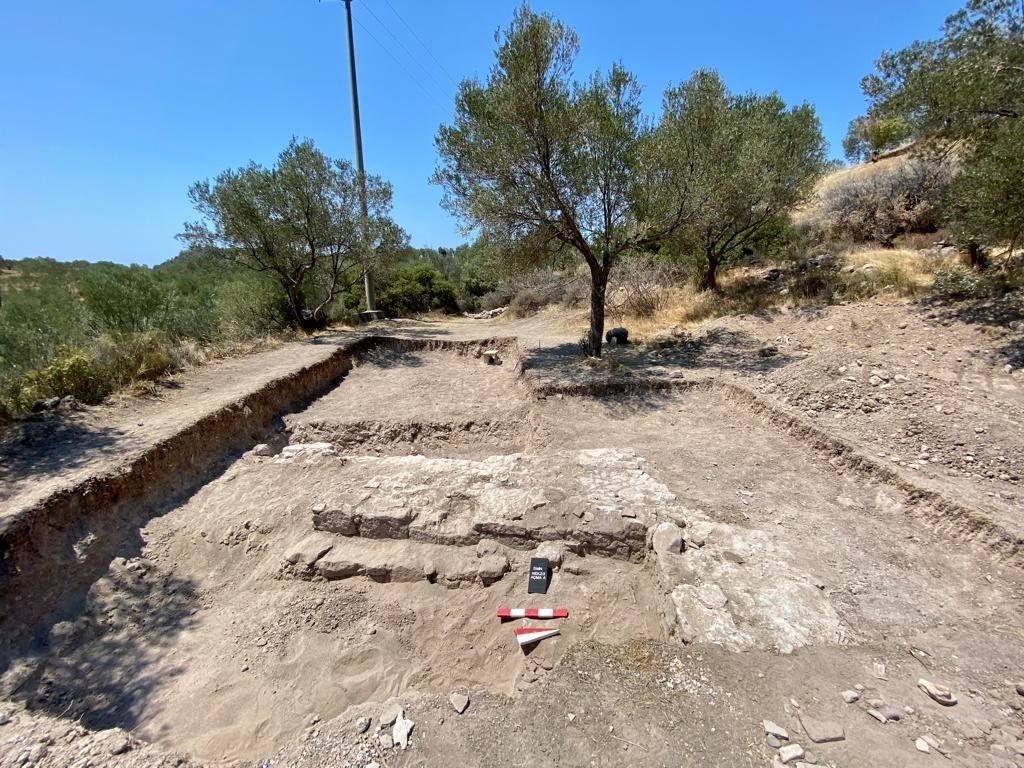© Turkuvaz Haberleşme ve Yayıncılık 2026
A 2,000-year-old monumental tomb dating back to the Roman Empire period was discovered in the necropolis (cemetery) adjacent to the northwest of Apollon Smintheus Sanctuary (Smintheion), located in the town of Gülpınar, Çanakkale.
Initial assessments of the skeletons found within the burial chamber inside the vessel revealed that more than 10 individuals, including children and adults, were interred in this tomb, their remains disturbed and mixed. Researchers suggest that this tomb might have been commissioned by affluent individuals due to its plan, indicating the existence of monumental tombs during the Roman Imperial period at Smintheion.
The excavation, which began on June 15, was concluded this year on Oct. 1. The concentration was in the necropolis (cemetery) situated to the northwest of the Apollon Smintheus Temple. Excavations at three different points revealed remnants of two tombs alongside foundational remains of some structures.
Excavations and restoration efforts at the temple, a project initiated in 1980, were carried out this year by a team comprising approximately 20 experts and students from various scientific disciplines, under the leadership of Davut Kaplan from the Çanakkale Onsekiz Mart University's Department of Archaeology (ÇOMÜ). The project receives support from the Ministry of Culture and Tourism and the Turkish Historical Society.
Hüseyin Yaman, a member of the excavation team said: "We aim not only to acquire information about the burial traditions of individuals and communities that once existed here but also to contribute to the delineation of the distribution area of sacred structures, or in other words, to determine the boundaries of the sacred area. In line with this goal, in the excavations conducted at three different points, we revealed remnants of two tombs alongside foundational remains of some structures. Based on the artifacts found in the only room that seemed to have survived with intact foundations in the monumental tomb, we estimate its origin to be approximately 2,000 years ago, around the first century A.D."
Highlighting the new findings obtained in the necropolis after the excavation in the early 1990s, Yaman emphasized the discovery of some walls belonging to the Late Roman period, as well as a section of a stone-paved courtyard or dead-end street and a small, round-shaped structure resembling a pool.

"The round-shaped structure, with its lime-plastered base, is initially interpreted as part of a workshop. Geophysical surveys were conducted alongside excavations at three openings and initial results indicated the presence of different spaces. The work will continue in the upcoming years. With the potential emergence of more tombs in this area, along with an increase in the number of other spaces, we will be able to obtain much more comprehensive information about burial traditions, types of tombs, changes in the boundaries of the sacred area and architectural phases," he remarked.
The deputy head of the excavation, Oğuz Koçyiğit from ÇOMÜ, said: "During the excavation period, we particularly focused on the necropolis area. Meanwhile, our office and laboratory work continued at the excavation site. We also emphasized mapping and documentation work. We have been conducting intensive documentation work in the excavation area for the past few years. Mapping is quite crucial for us as we are trying to draft plans of existing structures and integrate them into the urban plan."
